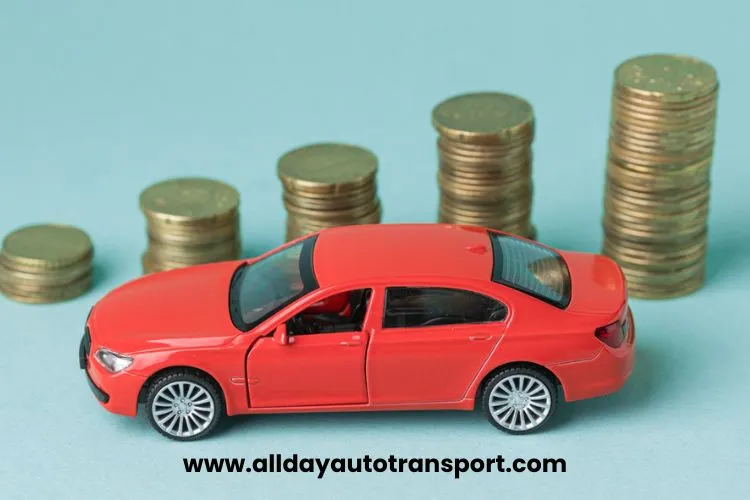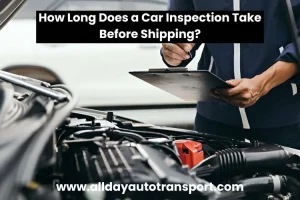Hey Folks, Planning a big move or just scored a sweet deal on a car across the country? We get it, shipping a car isn’t as simple as slapping a label on a package and waving it off. But no worries! We’re here to break down the cost to ship a car so it makes sense. Think of it as your go-to guide, with everything you need to know about budgeting, avoiding headaches, and choosing the option that’ll keep your car safe (and your wallet happy).
Understanding car shipping costs is a must because it’s all about the balance between budget, timing, and confidence that your car will make it to its destination safely. Knowing what goes into pricing gives you a leg up, making it easy to compare options and dodge any unexpected fees along the way. Plus, you’ll know exactly what kind of service you’re paying for, whether it’s a basic cross-country haul or a premium, enclosed service that treats your car like a VIP.
So, how much does it cost to ship a car? Good question! From vehicle type to timing, plenty of factors can impact pricing, and we’re about to break them down in a way that’s easy to follow. Ready to get started? Let’s dive into what influences car shipping costs.
Table of Contents
ToggleWhat Influences The Cost to Ship a Car?
Shipping a car sounds simple, but several factors play into the total cost. Let’s dive into what drives up (or down) those rates and how you can make the best choice for your ride.
Distance and Route
Think of car shipping like any other trip, longer distances and tricky routes mean higher costs. Here’s the breakdown:
- Short vs. Long Distances: Imagine you’re sending a car from Los Angeles to San Francisco. That’s a quick hop for a transport truck, so costs stay on the lower end. But if you’re shipping from coast to coast, like NYC to LA, those miles add up, and so does the bill. Long distances mean more fuel, more hours on the road, and ultimately, more dollars out of pocket.
- Rural vs. Urban Routes: The location also matters. Urban areas with major highways are way easier for transport companies to reach, so the cost to ship a car tends to be lower. But if you’re out in a rural area where GPS says “good luck,” the extra miles to pick up or drop off your car can increase costs.
- Tip: Wondering exactly how much these distances add up? A car shipping cost calculator can be your BFF. Just enter your starting and destination points, and you’ll get an estimated rate based on distance, saving you from guessing and budgeting headaches. These calculators are all over reliable auto transport websites, making it easy to compare different distance scenarios and pick what fits your budget best.
Type of Transport: Open vs. Enclosed Transport
Now, let’s talk about transport styles because just like choosing between streetwear and designer wear, the way your car travels says a lot about its style (and your budget).
- Open Transport: This is the budget-friendly, everyday ride for most cars. Picture a carrier truck loaded with multiple cars, rolling down the highway with all the cars visible. Open auto transport is super common, which makes it more affordable, and it’s usually the go-to for standard cars. If you’re moving your regular, everyday ride, open transport’s probably all you need.
- Enclosed Transport: Ready to splurge a little? Enclosed auto transport is like VIP treatment. Your car travels inside a fully enclosed truck, completely shielded from weather, dirt, and prying eyes. This option is ideal if you’re shipping something rare, classic, or just plain fancy, think sports cars or limited-edition models. It’s like putting your limited-edition sneakers in a special dust bag instead of throwing them in with the rest of your shoes. Sure, it costs more, but it gives that extra protection when you need it.
- Bottom Line: If you’ve got a car your baby or a collector’s item, go with the enclosed. But for the average car, open transport keeps things affordable and still gets your car to the finish line in great shape.
Vehicle Type And Size
Ever heard the phrase “size matters”? Well, in-car shipping, it does.
- Size and Weight Matter: Larger vehicles like SUVs, trucks, and even some luxury cars take up more space on the carrier, which means fewer cars fit. Bigger cars also weigh more, so they add to the transport’s overall weight, which impacts fuel costs and may require special handling.
- Example: If you’re shipping an SUV, expect to pay more than if you’re moving a small, compact car. This difference in size and weight is why car shipping rates vary so widely based on vehicle type. So, if you’re moving a bulky truck, factor in a little extra on the shipping bill.
- Quick Tip: Not sure how much your vehicle’s size will impact the cost? Reliable auto transport sites often offer detailed pricing based on vehicle types in their calculators, so you’re not left guessing.
Understanding these factors makes it easier to decide which options work best for your budget, timeline, and vehicle type. By knowing what impacts the cost to ship a car, you’re in control and can choose the shipping setup that suits you best—without any sticker shock at the end.
Different Car Shipping Options: Finding What’s Best for You
Door-to-Door vs. Terminal-to-Terminal Shipping
So, you’re looking to ship your car but want to know the best way to do it? Let’s talk options. First up, we have Door-to-Door Shipping. This service is the “Netflix and chill” of car shipping, it’s all about convenience. With door-to-door, the carrier picks up your car right from your home and delivers it directly to your new address. It’s perfect if you want a hands-off experience, but heads up it’s usually pricier since you’re paying for that ultra-personalized service.
On the other hand, there’s Terminal-to-Terminal Shipping. Think of this as the “DIY” approach: it’s cheaper, but you’ll need to do a bit of legwork. With this option, you’ll drop off your car at a shipping terminal (think of it like a parking garage that stores cars for shipping), and then it’ll be shipped to another terminal where you can pick it up. It’s budget-friendly, but keep in mind it requires a little extra time and effort to drive to and from the terminals. If you’re good with that, you’ll save a bit!
Expedited vs. Standard Shipping
Now, are you in a rush? If so, Expedited Shipping might be your jam. This is like paying for express delivery when you needed that package yesterday. With expedited car shipping, the transport company prioritizes your car, meaning it arrives faster, but naturally, the cost is higher too. It’s great if you need your car quickly or have a tight schedule, but if you’re chill and flexible, it might not be worth the extra bucks.
Enter Standard Shipping, the classic and budget-friendly choice. It’s more cost-effective, but it also takes a bit longer because the carrier picks up other cars along the way to fill up their transport. It’s a slower process, but hey, your wallet will thank you! So, if you’ve got some time to spare, this option will keep things affordable without sacrificing the safe arrival of your car.
Average Costs and How to Calculate Them
Overview of Average Costs
Let’s get straight to it—how much is it gonna cost you to ship that car? The truth is, there’s no “one-size-fits-all” price tag, but we can give you a general ballpark. On average, shipping a car across the country typically falls somewhere between $800 to $1,500. For shorter, local moves, the cost could dip from $300 to $700, but this can shift depending on a few factors like distance, transport type, and your car’s size. Think of it this way: shipping from LA to NYC is gonna cost more than moving a car within Texas! Industry averages are a solid starting point, but for something more exact, let’s get into using a cost calculator.
Using a Car Shipping Cost Calculator
Ready for the next level? Here’s the fun part: car shipping cost calculators! These are super helpful, free tools you can use to get a quote that’s personalized to your trip. Picture this like adding items to your shopping cart, it’s quick, interactive, and super simple. Just head to a reliable auto transport site (many reputable companies have them), enter your details, and voilà, you’ll get an estimate in seconds.
How to Use One:
- Enter Your Pickup and Drop-Off Locations: Where’s the car coming from, and where’s it going? The distance makes a difference!
- Vehicle Type: This helps calculate based on the size and weight of your car. Are we talking compact, sedan, or a big SUV?
- Transport Type: Choose between open or enclosed transport, remember, enclosed is pricier but better for high-end or exotic cars.
- Delivery Time: Need it fast? Adding expedited shipping will bump up the cost a bit.
Also Read: Enclosed Auto Transport Services: How To Choose The Right Provider For Your Needs
With the click of a button, the calculator will give you an estimate. And if you’re wondering, “How accurate are these prices?” well they’re usually close but may vary slightly based on any last-minute route or time changes.
Looking to get started? Check out calculators from reliable auto transport companies like ADAT to get a feel for the cost to ship a car in real time!
How to Find a Reliable Auto Transport Company
Researching Companies
Finding a legit auto transport company is like picking a good restaurant. You need reviews, transparency, and reliability. Start by checking online reviews to get the inside scoop on what other people experienced with each company. Look for companies with solid BBB (Better Business Bureau) ratings, Google reviews, or mentions on Trustpilot such as ADAT; these platforms can help you spot patterns in feedback. Make sure the company is properly licensed and insured and this is a non-negotiable. Don’t forget to compare quotes! Shopping around not only helps you find the best price but also gives you a feel for industry-standard rates, so you won’t fall for inflated costs.
Red Flags to Watch Out For
When looking for an auto transport company, keep an eye out for some major red flags. First up: beware of the too-good-to-be-true prices. If a quote sounds suspiciously low, think twice. It’s like spotting a luxury handbag on sale for $20—exciting but probably fake. This “bait-and-switch” tactic often draws people in with low quotes, only for prices to spike later with hidden fees. Next, if the company is vague about its insurance policies or reluctant to show its licensing, steer clear. Legit companies like ADAT are always upfront about the protection they offer.
Finally, watch out for companies that pressure you to book immediately or ask for full payment upfront. Trustworthy companies usually take a deposit, not the whole amount before shipping. Bottom line? A reliable auto transport company such as ADAT will make you feel like you’re making a safe, informed decision, not gambling on something sketchy.
How to Save on Car Shipping Costs
Flexible Timing
Timing can be everything when it comes to car shipping costs! If you’re not in a rush, shipping during off-peak months could save you serious cash. Picture this: just like flights and hotels spike in summer and holiday seasons, car shipping rates also climb when demand is high. If you can plan, aim to ship in the quieter months (think early spring or late fall) when rates are often lower.
Pro Tip: “If you’re chilling with no rush, waiting a bit to ship could get you a sweet deal!”
Group Transport and Discounts
Want to save more? Team up with friends, family, or neighbors who are shipping too! Many companies give discounts if you’re sending multiple cars together, kind of like a “group shipping” discount. Not only does this lower the shipping car cost, but it’s also a smart way to reduce expenses if you’re all moving or buying cars around the same time.
Look for companies that offer flexible discounts and price matching for group shipping like ADAT. More cars in the carrier = more savings for you. If you’re set on reducing your car shipping costs, group transport is a total win-win!
Final Thoughts: The Ideal Choice
Alright, here’s the crux: when it comes to finding the right car shipping option, understanding the cost to ship a car is like having the ultimate cheat code. Whether you’re moving across the country or just sending a car to a friend, knowing what goes into pricing helps you avoid surprises (and keeps your budget intact!). By balancing your needs, speed, safety, and budget, you’re set to make the smartest choice.
So, what do you think? Have any shipping stories of your own? Or maybe a tip or two you learned the hard way? Drop your thoughts in the comments and help out the next reader!
FAQs on Car Shipping Costs
Q 1: How much does it cost to ship a car on average?
Great question! How much does it cost to ship a car? Well, it usually runs anywhere from $500 to $1,500, depending on the distance and whether you’re going budget-friendly with open transport or opting for the deluxe enclosed transport. Think of it like choosing between economy and first class!
Q 2: Are there any hidden fees in car shipping costs?
Nobody likes surprise fees, right? Luckily, most reliable auto transport companies like ADAT are upfront about costs. But heads up! Look for potential extras like pickup fees, expedited service, or insurance add-ons. Always check the fine print or ask directly so there’s no “surprise!” moment when you get the bill.
Q 3: Can I track my car during shipping?
Absolutely! Most companies like ADAT now offer tracking options, so you can keep an eye on your car like checking your food delivery. Just ask for tracking details from the shipping company to get real-time updates, and you’ll always know exactly where your ride is.




